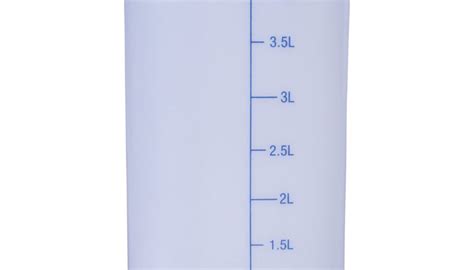Cuanto Es 60 Onzas En Litros
Kalali
Apr 05, 2025 · 4 min read

Table of Contents
How Many Liters are in 60 Ounces? A Comprehensive Guide
Many people find themselves needing to convert between ounces and liters, especially in cooking, baking, or scientific contexts. Understanding this conversion is crucial for accuracy and avoiding mistakes. This comprehensive guide will delve into the conversion of 60 ounces to liters, explaining the process, providing the answer, and exploring related conversions and practical applications.
Understanding Units of Measurement: Ounces and Liters
Before jumping into the conversion, let's clarify the units involved:
-
Ounces (oz): A unit of volume and weight, commonly used in the United States and some other countries. It's essential to distinguish between fluid ounces (used for liquids) and avoirdupois ounces (used for weight). In this context, we're focusing on fluid ounces (fl oz), which measure liquid volume.
-
Liters (L): A metric unit of volume, widely used internationally. One liter is equal to 1000 cubic centimeters. It's a convenient unit for measuring liquids in various applications.
The Conversion Factor: From Ounces to Liters
The key to converting between ounces and liters is understanding the conversion factor. There are approximately 29.5735 milliliters (mL) in one fluid ounce. Since there are 1000 mL in a liter, we can derive the conversion factor between fluid ounces and liters as follows:
1 fl oz ≈ 0.0295735 L
This approximation is commonly used for practical purposes, though a more precise value might be needed in certain scientific contexts.
Calculating 60 Ounces in Liters
Now, let's calculate how many liters are in 60 fluid ounces:
60 fl oz * 0.0295735 L/fl oz ≈ 1.77441 L
Therefore, 60 fluid ounces are approximately 1.77 liters. Rounding for practical purposes, we can say that 60 ounces is roughly equal to 1.8 liters.
Practical Applications: Real-World Scenarios
The conversion from ounces to liters is valuable in numerous situations:
-
Cooking and Baking: Many recipes, particularly those originating from the United States, use fluid ounces as a unit of volume. If you're using a metric measuring device or following a metric recipe, this conversion is crucial for precise measurements.
-
Scientific Experiments: Scientific experiments often require accurate volume measurements. Converting between ounces and liters ensures the experiment is conducted with the right amount of liquid.
-
Liquid Dispensing: In industries such as beverage production or pharmaceuticals, precise liquid measurement is critical. The conversion between ounces and liters facilitates the accurate dispensing of liquids.
-
Travel and International Shipping: When traveling or shipping liquids internationally, it's essential to understand the volume measurements in different unit systems. This conversion enables you to understand the restrictions related to carrying or shipping liquids.
-
Everyday Life: Even in everyday life, situations may arise where you need to convert between ounces and liters. For example, if you're buying a certain amount of liquid in one unit and need to know its equivalent in another unit, this conversion is very helpful.
Beyond 60 Ounces: Expanding the Conversion
While this guide focuses on 60 ounces, understanding the conversion factor allows you to convert any number of ounces to liters. Simply multiply the number of ounces by 0.0295735 to get the equivalent in liters.
For instance:
- 100 ounces: 100 fl oz * 0.0295735 L/fl oz ≈ 2.96 liters
- 25 ounces: 25 fl oz * 0.0295735 L/fl oz ≈ 0.74 liters
- 150 ounces: 150 fl oz * 0.0295735 L/fl oz ≈ 4.44 liters
Working with Other Units: Expanding Your Conversion Skills
The ability to convert between ounces and liters is a stepping stone to mastering other unit conversions. It's helpful to be familiar with conversions involving:
- Milliliters (mL): As mentioned earlier, 1 fl oz ≈ 29.5735 mL.
- Gallons (gal): There are approximately 128 fl oz in 1 gallon. You can use this to convert gallons to liters indirectly via ounces.
- Cubic centimeters (cm³): 1 mL is equivalent to 1 cm³. This connection links volume units between the imperial and metric systems.
Tips for Accurate Conversions
- Use a Calculator: For precise conversions, especially when dealing with larger numbers of ounces, use a calculator to avoid manual calculation errors.
- Consider Significant Figures: Depending on the context (scientific vs. everyday use), you might need to round your answer to a certain number of significant figures.
- Double-Check Your Work: Always review your calculations to ensure accuracy.
Conclusion: Mastering Ounce-to-Liter Conversions
Converting 60 ounces to liters, as well as understanding the broader principles of unit conversion, is a valuable skill in various aspects of life. Whether in cooking, science, or everyday situations, the ability to accurately convert between different units of measurement ensures precision and avoids errors. By understanding the conversion factor and applying it consistently, you can confidently navigate conversions between ounces and liters and other related units. This ability contributes to increased efficiency and accuracy in numerous tasks. Remember to use a calculator for precise conversions, consider significant figures, and always double-check your work for optimal results.
Latest Posts
Latest Posts
-
How Tall Is 52 In Inches
Apr 05, 2025
-
What Is 36 7 Degrees Celsius In Fahrenheit
Apr 05, 2025
-
6 Out Of 8 Is What Percentage
Apr 05, 2025
-
What Is 4 11 As A Decimal
Apr 05, 2025
-
28 Cm Equals How Many Inches
Apr 05, 2025
Related Post
Thank you for visiting our website which covers about Cuanto Es 60 Onzas En Litros . We hope the information provided has been useful to you. Feel free to contact us if you have any questions or need further assistance. See you next time and don't miss to bookmark.
